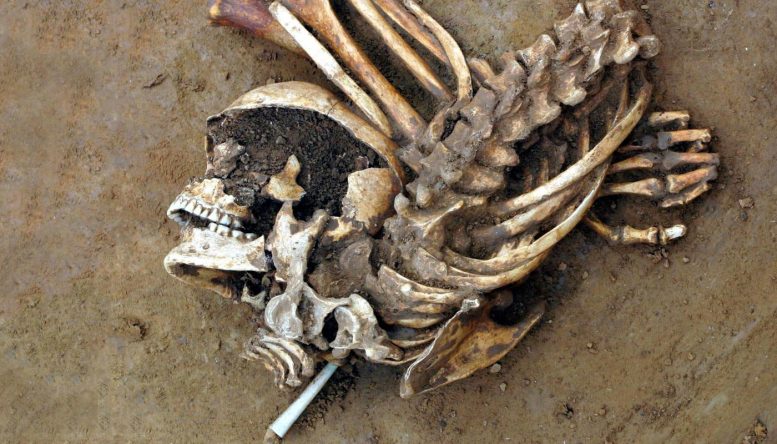
A photograph of the skeleton of one of the four individuals who we have sequenced who we think is likely to have participated in the migration we detect into southern Britain and to have displaced half the ancestry of the local population. This skeleton was excavated from the site of Cliffs End Farm in Kent. Credit: Wessex Archaeology
Two new studies highlight technological advances in large-scale genomics and open windows into the lives of ancient people.
New research reveals a major migration to the island of Great Britain 3,000 years ago and offers fresh insights into the languages spoken at the time, the ancestry of present-day England and Wales, and even ancient habits of dairy consumption.
The findings are described in Nature by a team of more than 200 international researchers led by Harvard geneticists David Reich and Nick Patterson. Michael Isakov, a Harvard undergraduate who discovered the existence of the migration, is one of the co-first authors.
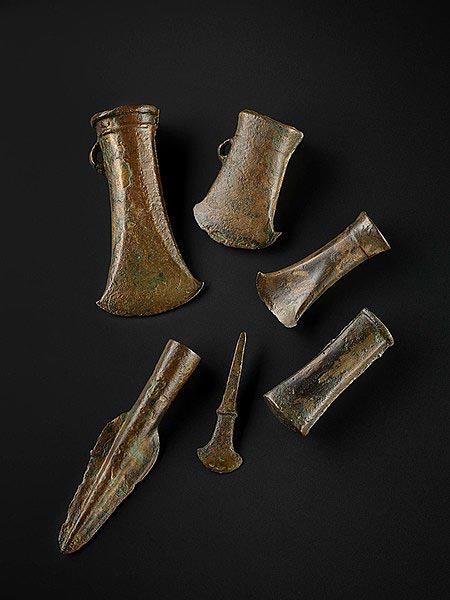
This image is of bronze age tools from the National Museums of Scotland, which could give readers a sense of the material culture associated with people who lived at the time of the migration. Credit: Bronze Age tools curated the National Museums of Scotland
The analysis is one of two Reich-led studies of DNA data from ancient Britain that Nature published on Tuesday. Both highlight technological advances in large-scale genomics and open new windows into the lives of ancient people.
“This shows the power of large-scale genetic data in concert with archaeological and other data to get rich information about our past from a time before writing,” said Reich, a professor in the Department of Human Evolutionary Biology and a professor of genetics at Harvard Medical School. “The studies are not only important for Great Britain, where we now have far more ancient DNA data than in any other region, but also because of what they show about the promise of similar studies elsewhere in the world.”
The researchers analyzed the DNA of 793 newly reported individuals in the largest genome-wide study involving ancient humans. Their findings reveal a large-scale migration likely from somewhere in France to the southern part of Great Britain, or modern-day England and Wales, that eventually replaced about 50 percent of the ancestry of the island during the Late Bronze Age (1200 to 800 B.C.).
The study supports a recent theory that early Celtic languages came to Great Britain from France during the Late Bronze Age. It challenges two prominent theories: that the languages arrived hundreds of years later, in the Iron Age, or 1,500 years earlier at the dawn of the Bronze Age.
The findings reveal a large-scale migration likely from somewhere in France that eventually replaced about 50 percent of the ancestry of Great Britain during the Late Bronze Age.
Previous research has shown that large-scale movement often accompanied language changes in pre-state societies. The Reich team argues that this untold migration event makes more sense for the spread of early Celtic languages into Britain.
“By using genetic data to document times when there were large-scale movements of people into a region, we can identify plausible times for a language shift,” Reich said. “Known Celtic languages are too similar in their vocabularies to plausibly descend from a common ancestor 4,500 years ago, which is the time of the earlier pulse of large-scale migration, and very little migration occurred in the Iron Age. If you’re a serious scholar, the genetic data should make you adjust your beliefs: downweighting the scenario of early Celtic language coming in the Iron Age [and early Bronze Age] and upweighting the Late Bronze Age.”
As part of the genetic analysis, the researchers found that the ability to digest cow’s milk dramatically increased in Britain from 1200 to 200 B.C., which is about a millennium earlier than it did in central Europe. These findings illuminate a different role for dairy consumption in Britain during this period compared with the rest of mainland Europe. More study is needed to define that role, the researchers said. Increased milk tolerance would have provided a big advantage in the former of higher survival rates among the children of people carrying this genetic adaptation.
“It’s sort of incredible that we have geneticists, we have statisticians, we have archaeologists, linguists, and even chemical analysis coming together.”
— Michael Isakov, undergraduate who discovered the 3,000-year-old migration
The newly discovered ancestry change happened around 3,000 years ago, more than a millennium and a half before the Saxon period. The team was aware of a migration into England at some point during this gap because of an observation they made in research published in 2016. That study showed that contemporary English people have more DNA from early European farmers than people who lived in England about 4,000 years ago. The team set out to collect DNA from later periods to detect the shift.
The discontinuity — a specific point in time when the percentage of farmer ancestry in English genomes changed — was first noticed in the summer of 2019 by Isakov, an applied mathematics concentrator. He had started working as a researcher in Reich’s lab the summer after his first year and was able to increase the statistical power of the group’s ancestry tests. When he noticed some outliers in the data from people living 3,000 years ago, he led a closer analysis and discovered the migration.
“It’s an extraordinary outcome and I’m very happy that I was able to get through it,” said Isakov, who will graduate in May.
The second paper looks at kinship practices of 35 individuals who lived about 5,700 years ago and were buried in a tomb at Hazleton North in Gloucestershire, England. The researchers found a 27-person family — three times larger than the second-largest documented ancient family — whose kin relationships could be precisely determined by analyzing their DNA. The team created a family tree that covered five generations and found examples of polygyny, polyandry, adoption, and a key role for both patrilineal and matrilineal descent.
The lab’s research illustrates the interdisciplinary collaborations that are required to tell the richest stories of the ancient past, Isakov said.
“It’s sort of incredible that we have geneticists, we have statisticians, we have archaeologists, linguists, and even chemical analysis coming together. I think that the fact that we’re able to like merge all these fields and have an actual insight that’s culturally important is a great example of interdisciplinary science.”
For more on this research, see Ancient DNA From Neolithic Tombs in Britain Reveals the World’s Oldest Family Tree.
References:
“Large-scale migration into Britain during the Middle to Late Bronze Age” by Nick Patterson, Michael Isakov, Thomas Booth, Lindsey Büster, Claire-Elise Fischer, Iñigo Olalde, Harald Ringbauer, Ali Akbari, Olivia Cheronet, Madeleine Bleasdale, Nicole Adamski, Eveline Altena, Rebecca Bernardos, Selina Brace, Nasreen Broomandkhoshbacht, Kimberly Callan, Francesca Candilio, Brendan Culleton, Elizabeth Curtis, Lea Demetz, Kellie Sara Duffett Carlson, Daniel M. Fernandes, M. George B. Foody, Suzanne Freilich, Helen Goodchild, Aisling Kearns, Ann Marie Lawson, Iosif Lazaridis, Matthew Mah, Swapan Mallick, Kirsten Mandl, Adam Micco, Megan Michel, Guillermo Bravo Morante, Jonas Oppenheimer, Kadir Toykan Özdogan, Lijun Qiu, Constanze Schattke, Kristin Stewardson, J. Noah Workman, Fatma Zalzala, Zhao Zhang, Bibiana Agustí, Tim Allen, Katalin Almássy, Luc Amkreutz, Abigail Ash, Christèle Baillif-Ducros, Alistair Barclay, László Bartosiewicz, Katherine Baxter, Zsolt Bernert, Jan Blažek, Mario Bodružic, Philippe Boissinot, Clive Bonsall, Pippa Bradley, Marcus Brittain, Alison Brookes, Fraser Brown, Lisa Brown, Richard Brunning, Chelsea Budd, Josip Burmaz, Sylvain Canet, Silvia Carnicero-Cáceres, Morana Cauševic-Bully, Andrew Chamberlain, Sébastien Chauvin, Sharon Clough, Natalija Condic, Alfredo Coppa, Oliver Craig, Matija Crešnar, Vicki Cummings, Szabolcs Czifra, … Clive Waddington, Paula Ware, Paul Wilkinson, Linda Wilson, Rob Wiseman, Eilidh Young, Joško Zaninovic, Andrej Žitnan, Carles Lalueza-Fox, Peter de Knijff, Ian Barnes, Peter Halkon, Mark G. Thomas, Douglas J. Kennett, Barry Cunliffe, Malcolm Lillie, Nadin Rohland, Ron Pinhasi, Ian Armit and David Reich, 22 December 2021, Nature.
DOI: 10.1038/s41586-021-04287-4
“A high-resolution picture of kinship practices in an Early Neolithic tomb” by Chris Fowler, Iñigo Olalde, Vicki Cummings, Ian Armit, Lindsey Büster, Sarah Cuthbert, Nadin Rohland, Olivia Cheronet, Ron Pinhasi and David Reich, 22 December 2021 Nature.
DOI: 10.1038/s41586-021-04241-4
This research was funded in part by the John Templeton Foundation, the Allen Discovery Center program, the Howard Hughes Medical Institute, the National Institutes of Health, and the European Research Council.

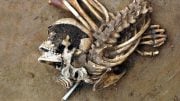

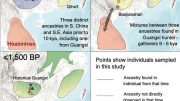
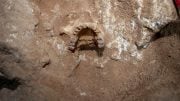
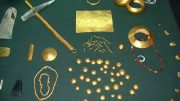
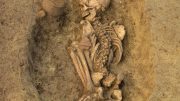
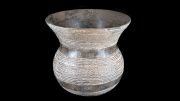
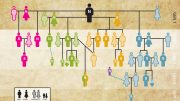
Wow. So, according to this picture, ancient men from England had a fine set of straight, strong teeth.
What happened?